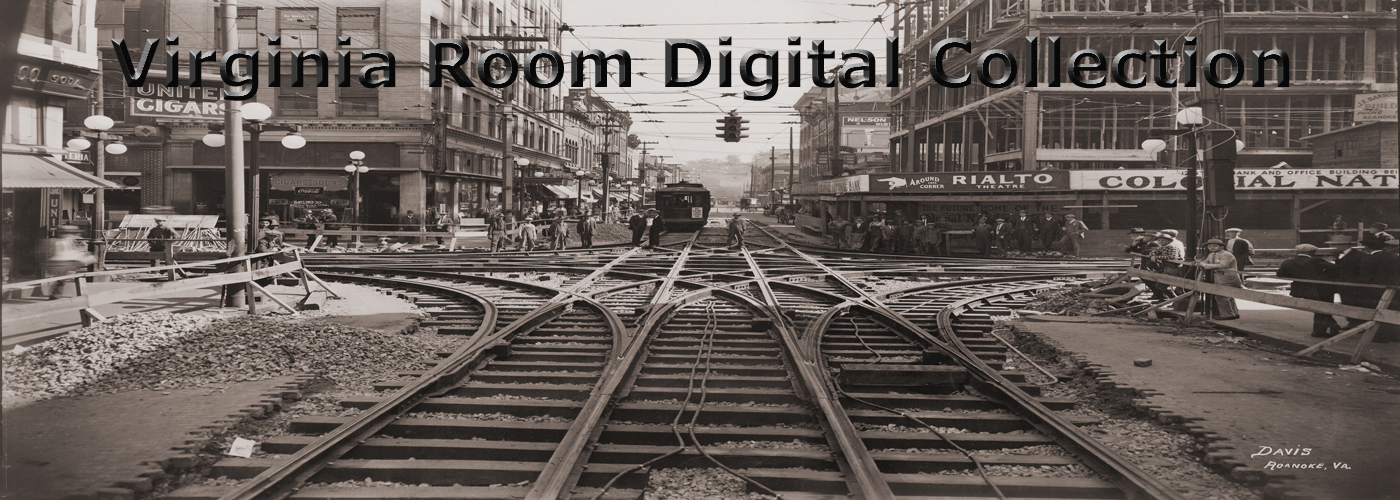Browse Items (6546 total)
Sort by:
The Virginia Room Digital Collection includes photographs, oral histories, books, pamphlets and finding aids to items in the Virginia Room. Continue to check back for new additions.
